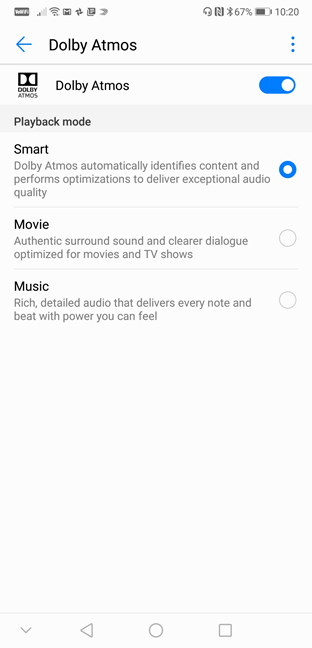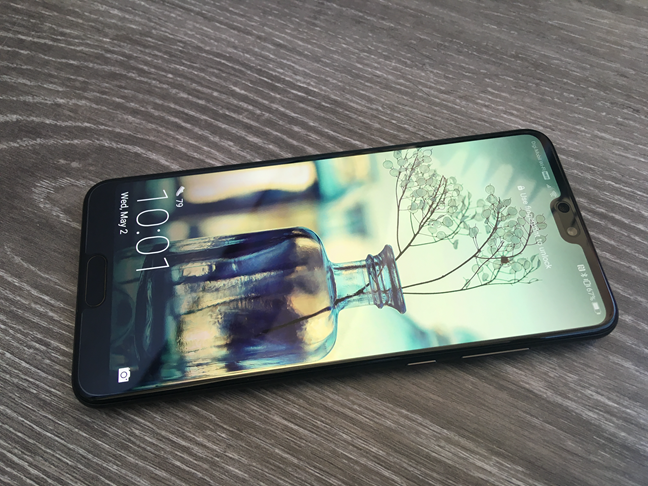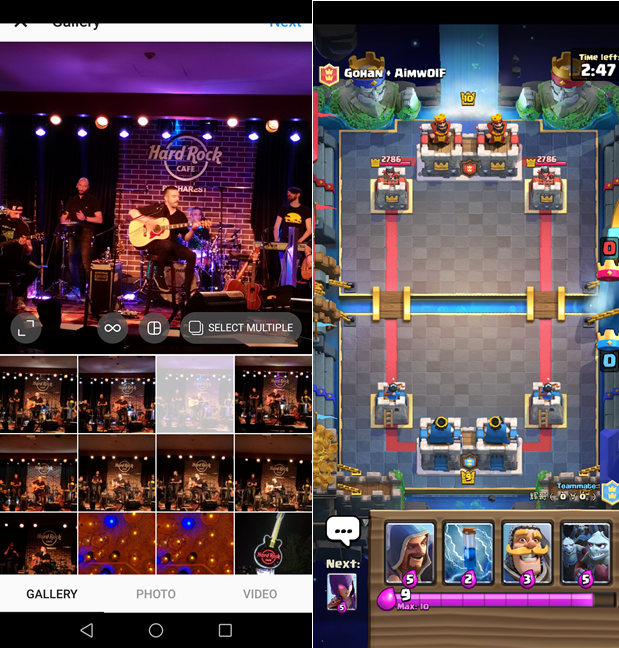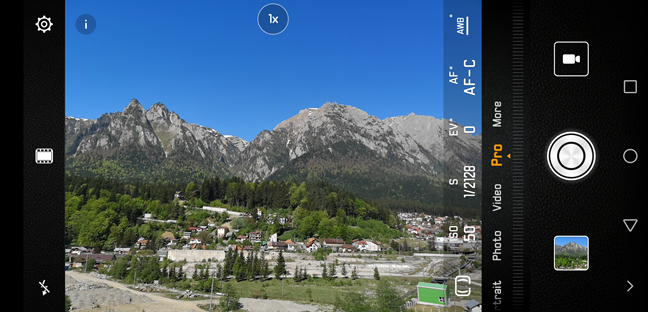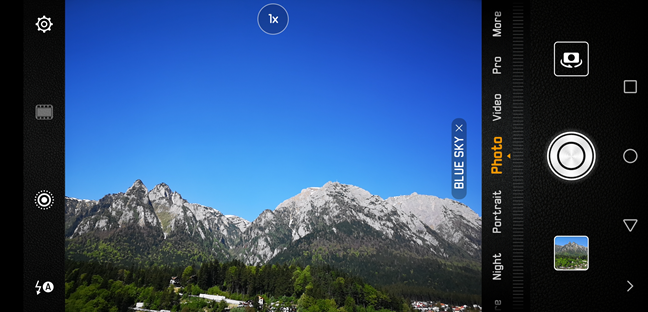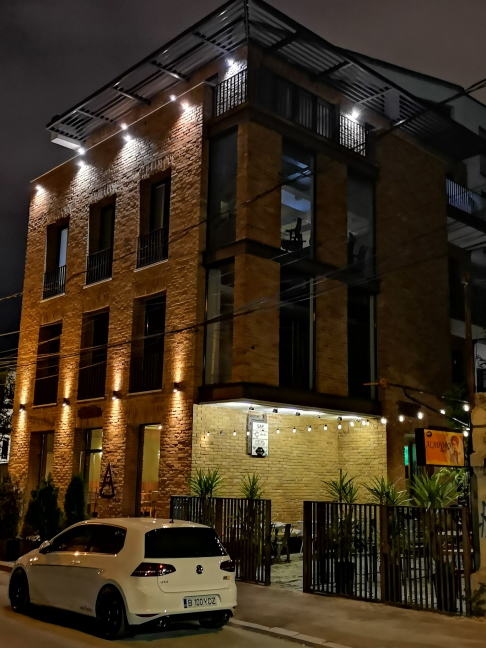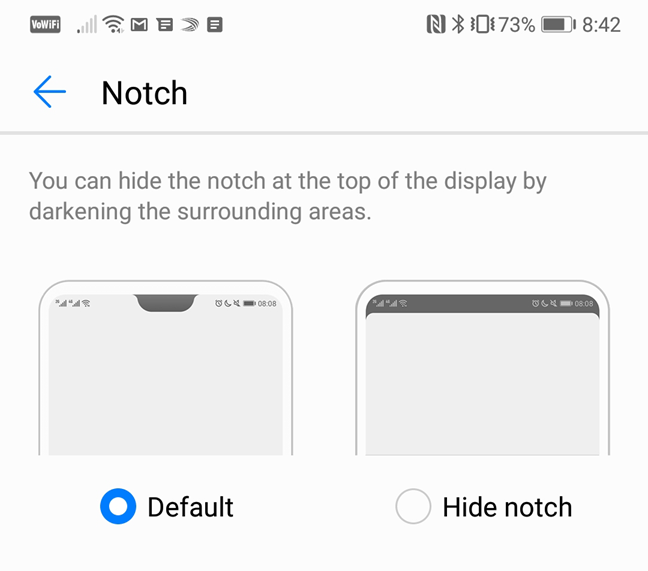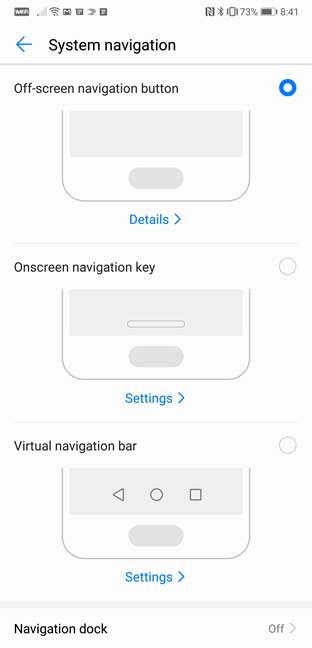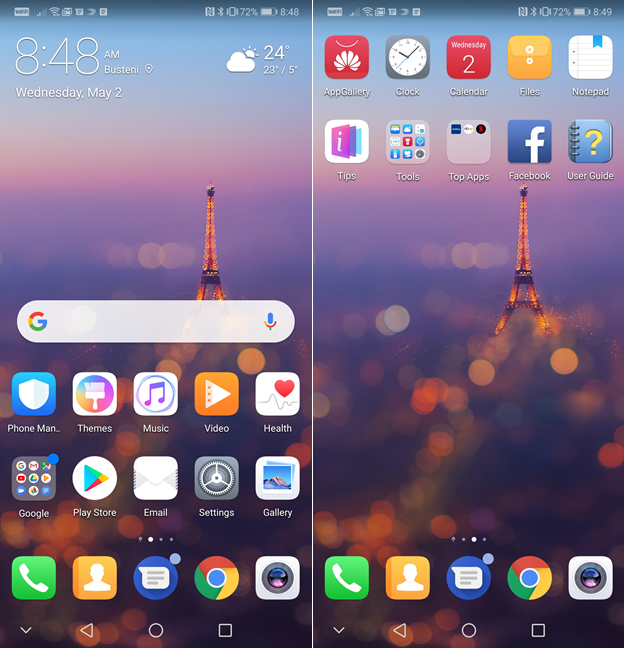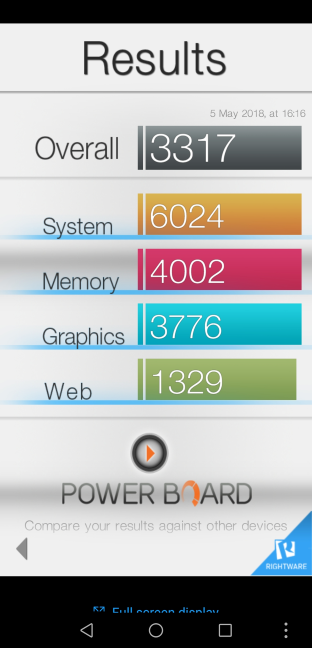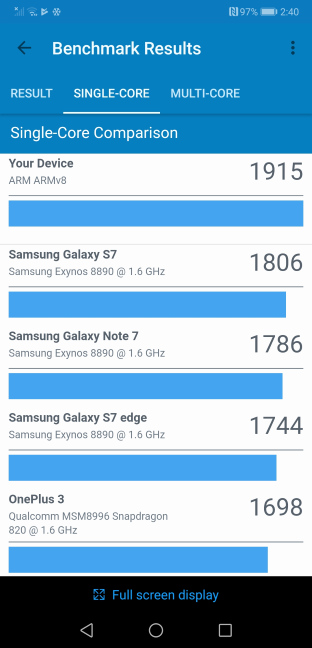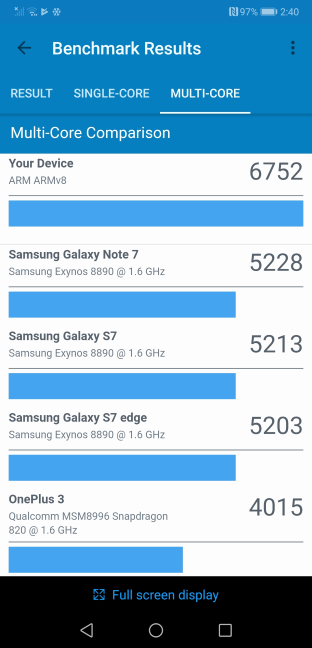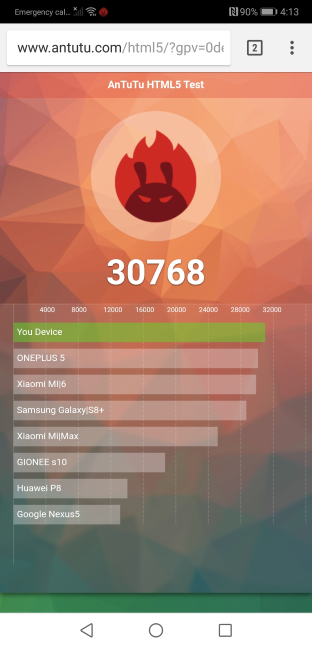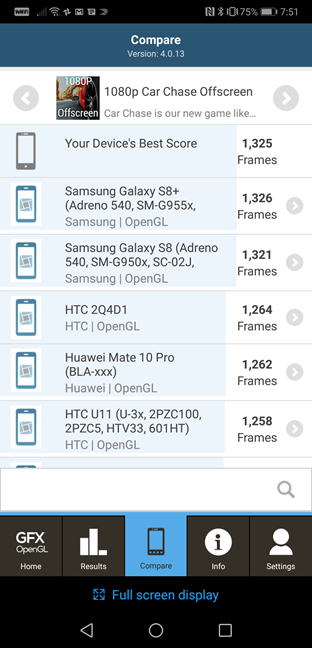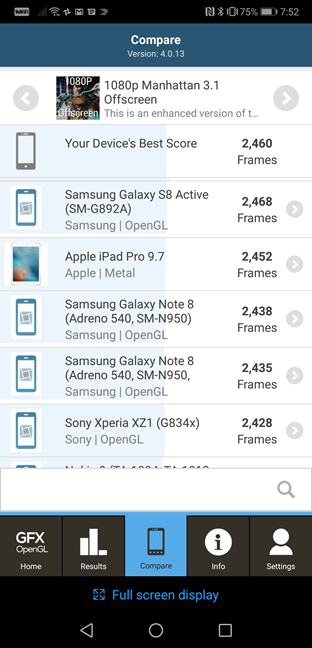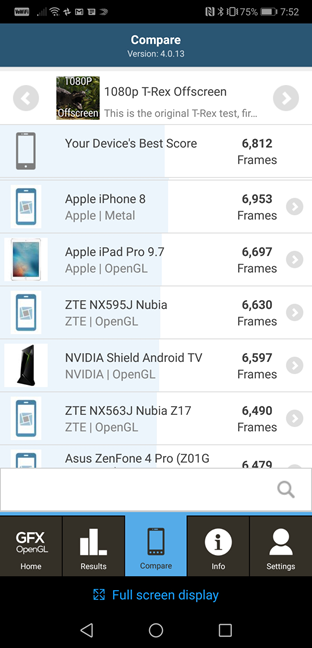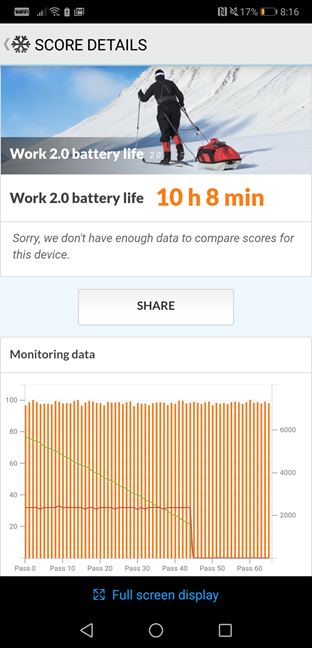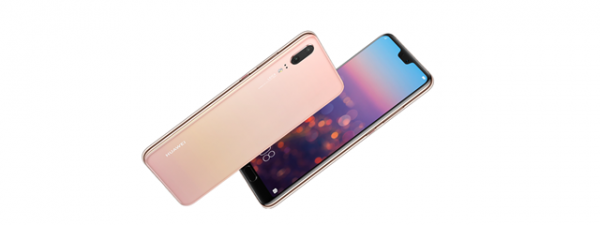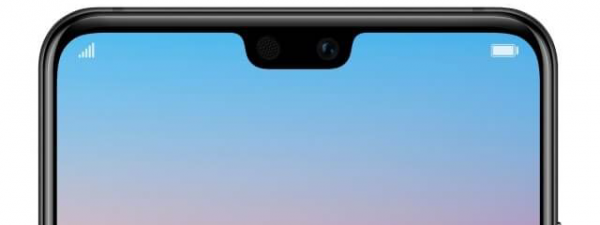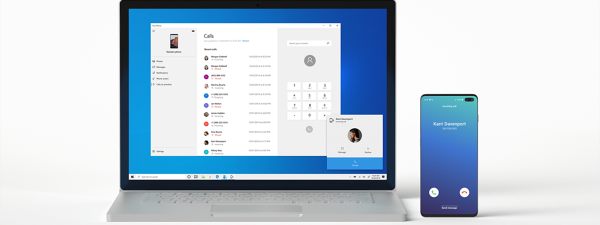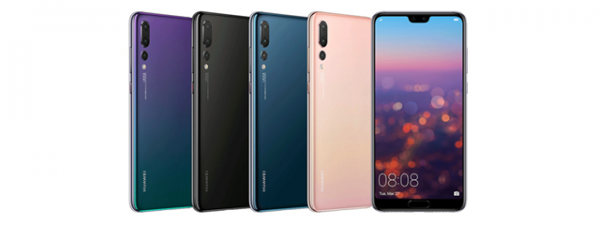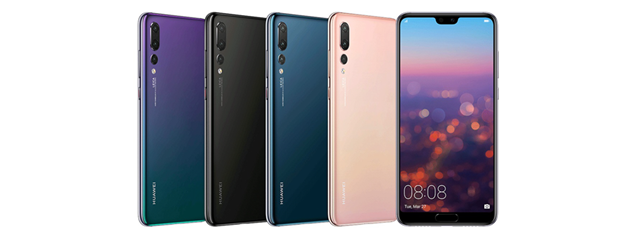
The smartphone experience on the Huawei P20 Pro
When it comes to making and receiving phone calls, the Huawei P20 Pro performs great, as its signal reception is reliable and its audio systems are working very well. All the phone calls we had on this smartphone were of high quality, regardless of the type of radio network and signal strength we had in our area. We used it in a mountainous area where mobile coverage is not the best at all times and in all places. Even so, all our phone conversations were clear on both ends of the wire (pun intended). 🙂
If you like watching movies or listening to music on your smartphone, you should know that the Huawei P20 Pro excels at this too. On the bottom edge of the smartphone, to the left and the right of the USB 3.1 Type-C port, there is a set of stereo speakers that do a good job at playing sound even at the highest volume settings. There are no interferences and no distortion whatsoever. If you prefer a higher level of audio clarity and fidelity, the bundled headphones are a good choice, and the Dolby Atmos will surely not let you down regarding quality. But, if you want to charge the smartphone and also use headphones, you have to buy yourself a pair of Bluetooth headphones, because the ones bundled are wired and connect through USB Type-C, just like the charger. There is no 3.5 audio jack on the Huawei P20 Pro.
The display Huawei used for the P20 Pro is AMOLED and thus very bright and with vivid colors. You will not have any issues understanding what is shown on the screen, even if you use it outdoors, in sunlight. The resolution is slightly higher than Full HD, and the display size is a perfect fit. They display has 408 ppi pixel density, which means that images, fonts, and gradients look smooth.
Multitasking is a breeze on the Huawei P20 Pro. The processor and the graphical unit are powerful, and the RAM is more than enough for anything you might want to run on it. No matter how many apps we had opened simultaneously, or how demanding the games were that we ran, the Huawei P20 Pro was always fast and fluent. The only minor downside was the 18.7:9 aspect ratio of the screen, which is not that common on modern smartphones. As a result, a few apps and games (Instagram and Clash Royale are two popular examples) have a few minor visual glitches in some places. App developers may need to update their apps to support better this aspect ratio that is common to all new Huawei smartphones in their P20 lineup.
Unlocking the Huawei P20 Pro was quick both when using the fingerprint sensor, and the face detection. We were especially pleased by the face detection algorithms which worked great even in low-light conditions. As a result, unlocking the smartphone almost always happened in an instant, which is very convenient.
As for its autonomy, the Huawei P20 Pro draws it from a large Lithium Polymer battery that has a capacity of 4000 mAh. It is more than enough to get you through a whole day of normal use, and even more if you use it lightly. For instance, we had the Huawei P20 Pro on a bicycle trip that lasted for eight hours. During this time we took many pictures, we had the GPS, and mobile data turned on, plus a Bluetooth headset connected to it. Also, Endomondo was running in the background during the whole trip, monitoring our cycling experience. At the end of our journey, the smartphone still had about 60 percent battery remaining, which is impressive.
The Huawei P20 Pro is an excellent smartphone. The phone calls you make are of high quality regardless of the network signal strength, and the processing power is more than enough for any activities, from browsing to social media to gaming or productivity. The only minor downside is that some apps and games need updating, to better support the screen's 18.7:9 aspect ratio.
The camera experience on the Huawei P20 Pro
The camera system on the Huawei P20 Pro is extraordinary. There are three main cameras on its back and one on its front, and all of them are outstanding. You get Leica optics and:
- One camera with 40 megapixels. It is used for color photography and has a f/1.8 aperture.
- A second camera that has 20 megapixels. This one is used for monochrome photography and has a f/1.6 aperture.
- The third camera has 8 megapixels and is used for telephotography. It has a f/2.4 aperture and can zoom optically up to 3x.
- On its front side, it comes with an impressive single-lens camera that has 24 megapixels and f/2.0 aperture.
The Camera app is also a lot better than anything we have seen on other smartphones. The app benefits from an Artificial Intelligence interface that Huawei calls Master AI. It can, in real-time, automatically detect 19 different photo categories. Once it does that, it automatically adjusts the camera settings to match the subject in front of you and deliver professional quality photographs. The Huawei P20 Pro camera system can detect and apply photo profiles for the following: Cat, Food, Group, Natural, Close-up, Night shot, Text, Greenery, Portrait, Dog, Fireworks, Blue Sky, Flowers, Stage, Document, Sunset, Snow, Waterfall, and Beach. If these do not satisfy you, although we doubt it, the Camera app also comes with a specialized Pro mode in which photographers can manually adjust any settings they want.
The pictures you take with the Huawei P20 Pro are great in almost all situations. The colors are vivid, the images have great contrast, and the dynamic range is excellent. We loved taking close-ups and shooting nature landscapes.
We were impressed to a whole new level when we started taking portraits. There is no noticeable noise in any photography, and the bokeh effect is like second nature for this smartphone. 🙂
The Huawei P20 Pro offers exceptional results in low-light environments also. The smartphone's camera AI shows its powers here too. We have taken photos in pitch black, like the one you can see below, without using a tripod or anything like that. The results are impressive considering that hands shake, things move, and the sun has set a long time ago. There is a bit of noise in such photos, but it is nowhere near to what other smartphones give you in similar conditions. One more reason to love the Huawei P20 Pro!
To get a better idea of the camera system quality, here is a gallery with some of the photos that we have taken with the Huawei P20 Pro. It includes diverse shots, taken in different lighting conditions, and also a few selfies:
The smartphone can shoot videos in up to 4K UHD resolution at 3840 x 2160 pixels. If you want video stabilization to work though, you must use a Full HD resolution of 1080p. That is what we prefer because shaking images is not our favorite thing to see. Fortunately, the Huawei P20 Pro uses its camera AI to stabilize videos, and the results are great.
Even if you are driving or if you are filming while walking, the images are never shaky and look like you are floating or walking on clouds. 🙂 Here is a sample of a video we took while cycling through the woods:
The same image quality with vibrant colors and good contrast as in the photos it takes can be seen in the videos that the Huawei P20 Pro films. To get a better idea of how it fares in a more static scenario, check the panorama video below:
And if you are a fan of slow-motion videos, Huawei P20 Pro has you covered. It can film slow-mo videos in 4x speed (120 fps), 8x (240 fps), and in super slow-motion in 32x speed (960 fps). Here is how the super slow-motion looks like:
If you love to photograph or film everything you see, then the Huawei P20 Pro is probably the best Android smartphone you can get.
Android 8.1 Oreo, EMUI and bundled apps
The Huawei P20 Pro comes with the latest Android operating system from Google: Android 8.1 Oreo. Instead of using the default Android user interface, Huawei prefers to use their user interface called EMUI, which now has reached version 8.1, the same number Android. EMUI was a good interface in the past, but now it feels better still. The company has polished it to match this smartphone and offers exciting features and useful apps. For instance, because the Huawei P20 Pro has that notch on the top of the screen, where the front camera resides, EMUI offers a setting for masking it with a black status bar, if you do not like it.
EMUI also lets you change the way the buttons from the navigation bar are displayed and used. For example, you can set it so that you see the Home, Back and Recent apps buttons always displayed on the bottom of the screen. Alternatively, you can hide them and use the fingerprint reader as the Home button if you tap and hold on it, tap only to go Back and swipe on the screen to switch to recent apps that you have used.
Regarding the apps that are preinstalled on the Huawei P20 Pro, you should know that although there are many, most of them are useful. Here is the list of apps that are bundled with the Huawei P20 Pro:
-
AppGallery - is a reinterpretation of the Play Store on Huawei's part. You have to connect to your Huawei account (or create one first), and then you can access a curated store of apps recommended by Huawei.
-
Backup - use it to backup personal data such as contacts, messages, call logs, apps and also multimedia content. You can save backups to your computer or on a USB storage device.
-
Booking.com - the official app for the popular travel service. If you are not interested in using it, you can remove it with ease.
-
Clock - an app that shows you the time and also gives you access to a stopwatch and a timer.
-
Calculator - a simple and easy to use a calculator.
-
Calendar - lets you manage your time and schedule events.
-
Compass - a simple compass app that tells you the cardinal points.
-
eBay - the app for the popular online marketplace.
-
Email - an email app that lets you connect email accounts from Gmail, Hotmail, Yahoo, Exchange or other similar services.
-
Facebook - the official app of the Facebook social network. If you do not want it, you can remove it.
-
Files - your basic file manager for Android. It is easy to use and useful.
-
Flashlight - the app does what its name implies, and it can be useful at times.
-
Gallery - this is Huawei's reinterpretation of the Google Photos app, which is also bundled with your smartphone. Even though it is a well-built app, we prefer Google Photos.
-
HiCare - a support app that provides you with customer care services. You can use it to find information such as the nearest service center, read the warranty policy, check your warranty status, read the manuals and so on.
-
Health - provides information about health activities such as the steps you have taken or the calories you have burned.
-
Mirror - while a mirror is not always at hand, your smartphone is, and you can use it to see how awesome you are.
-
Music - a simple music player.
-
Netflix - the app of the popular movie service bearing the same name.
-
Notepad - a simple note-taking app.
-
Phone Clone - lets you move data such as contacts, call log, messages, calendar events, Wi-Fi, multimedia files, app data, browser and content owned by you, from an old device to your new smartphone, via Wi-Fi.
-
Phone Manager - cleans your smartphone of junk files, cache, and malware, and shows details about the mobile data you used, the app permissions you gave and so on. It is worth mentioning that Avast powers the antivirus.
-
Quik - a simple video editor that can help you create new videos using the photos and videos you shot on your smartphone.
-
Smart Remote - this app lets you add remote controls that use the infrared port on your smartphone to control various home appliances such as your TV, air conditioner, set-top box, DVD player, projector and so on.
-
Recorder - a basic voice recorder that can be useful when you need this type of app.
-
Themes - a portal for discovering and installing themes and wallpapers. It works only if you log in with a Huawei ID.
-
Tips - shows you tips on how to get the most of your new smartphone.
-
Translator - is an app developed by Microsoft that lets you translate voice and text in real-time.
-
Video - basic movie player for viewing the movies that are stored on your smartphone.
-
Wallet - with it you can store credit or debit cards details and use them to buy stuff.
-
Weather - gives you the weather forecast for your area or for the places you specify.
Besides all the above apps, Huawei P20 Pro also comes with the standard apps from Google: Google, Gmail. Maps, YouTube, Drive, Play Music, Duo, Photos, Docs, Sheets, Slides, and Chrome.
We like the fact that the Huawei P20 Pro uses the latest Android operating system available to date, and we like the new version of EMUI too. Huawei invested effort in making it more beautiful and customizable than its previous versions. Also, with a few exceptions, most of the bundled apps are useful, so you will probably not uninstall or disable them.
Performance in benchmarks
The hardware specifications for the Huawei P20 Pro are impressive. But how do you compare them with those of other smartphones in the real world? The short answer is benchmarks, so that is what we did. Here are its results in some of the most common benchmark apps for Android:
First, we ran the Basemark OS Platform Benchmark, an all-in-one benchmarking tool for measuring the average performance of Android smartphones and tablets. Huawei P20 Pro has had an overall score of 3317 points, which is almost identical to what you get with a Samsung Galaxy S9 Plus. You can also see individual scores for working with the memory, the graphics chip or the web, in the screenshot below.
Next, we used Geekbench 4 to see how well Huawei P20 Pro uses its processor cores. The single-core test is relevant because many apps still do not know how to take advantage of a multicore processor, and some games also need high single core speed to work well. Here, Huawei P20 Pro had a score of 1915 points. You can see how it compares with other smartphones in the screenshot below.
The multi-core test revealed a score of 6752 points. This test set assesses the processor's speed when running multiple tasks simultaneously, and using multiple cores. You can see a comparison between Huawei P20 Pro and other smartphones in the screenshot below.
Next, we checked the web browsing performance, using the AnTuTu HTML5 Test. Huawei P20 Pro had a score of 30768 points. You can see how it compares with other devices, in the screenshot below.
Huawei P20 Pro supports 4G LTE mobile data connections, so we also measured its performance in this area also. We used Speedtest, an app which tests how fast your internet connection is. The results were excellent and similar to what you get with other high-end smartphones in our area.
We also wanted to run some gaming benchmarks, to see how good the Huawei P20 Pro is in games. To do that, we used an app called GFXBench GL Benchmark. We only took into consideration the results measured in the 1080p Car Chase Offscreen, 1080p Manhattan 3.1 Offscreen and 1080p T-Rex Offscreen tests. We choose to use only the 1080p tests because their resolution is standardized at 1080p and the results can be compared more easily with other smartphones, even if their screen resolutions differ.
In the 1080p Car Chase Offscreen test, Huawei P20 Pro rendered 1325 frames, a similar result with that of the Samsung Galaxy S8. This is a good result for users who are interested in gaming on their smartphone.
In the second gaming test that we ran, which was 1080p Manhattan 3.1 Offscreen, the Huawei P20 Pro managed to render 2460 frames. This is also a similar result to that of a Samsung Galaxy S8.
The third gaming test that we ran, 1080p T-Rex Offscreen, showed that the Huawei P20 Pro fares great in older games with fewer visual details, too. It managed to display no more no less than 6812 frames, which is 15% more than what you get on a Samsung Galaxy S8.
We conclude that if you want an Android device for gaming, the Huawei P20 Pro is an excellent choice, as it can run anything at the maxed graphical quality and high framerates.
Finally, there is one other significant aspect of any smartphone: how long can it last on a full battery charge. Although we mentioned earlier in this review that the battery time is great in our opinion, now it was time to measure it. For that, we used PCMark's Work 2.0 battery life test. It measures the autonomy of the battery when running normal daily activities such as browsing the web, editing documents and photos. Huawei P20 Pro managed to last for more than 10 hours in these tests. It is an excellent result for a high-end smartphone. For example, in this benchmark, the Samsung Galaxy S9 Plus lasts a bit more than 8 hours.
The only conclusion that we can draw at the end of our benchmarks is that the Huawei P20 Pro is one of the best smartphones with Android.
Do you like the Huawei P20 Pro?
As you have seen, the Huawei P20 Pro is a great smartphone, and we love it. Its design, its performance, and its camera are top-notch, and there are very few smartphones out there that can match it. Do you like it too? Would you buy it? Or will you wait until its price drops a little? Share your opinion in the comments section below and let's discuss.




